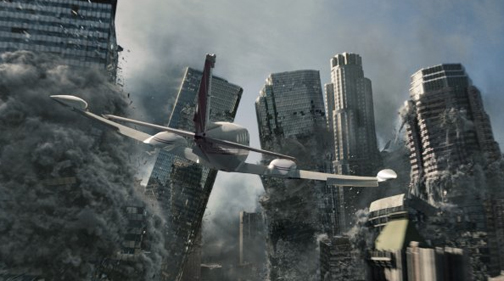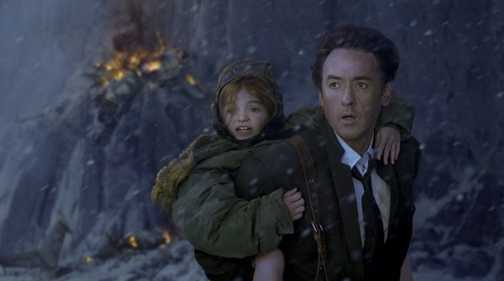
The latest apocalyptic Hollywood blockbuster, “2012” (2009), promised to be an epic adventure about a global cataclysm, bringing an end to the world, and the heroic struggles of the survivors.
Roland Emmerich (“Independence Day” (1996), “The Day After Tomorrow” (2004)) directs a low-key cast, led by John Cusack (“Con Air” (1997), “High Fidelity” (2000)) as the lead character Jackson Curtis, and Chiwetel Ejiofor (“Dirty Pretty Things” (2002)) as the lead scientist Adrian Helmsley, joined by an interesting appearance from Jimi Mistry, famous for his part in “The Guru” (2002).
“2012” is about a near future world where a freak solar flare causes the earth’s core to heat up, creating an unstable crust and causing havoc across the globe. The Mayan Calendar theory is the basis for this film, including a fictional mass-suicide of Mayan descendants, however it touches on end-of-world theories from Christianity also, and the scientific possibilities of such an event.

First, we follow geologists as they discover the terrifying news and, next, the world’s governments as they contemplate this and decide what action to take. At the same time, we follow the family of Curtis: his children, his ex-wife, her boyfriend, and himself, providing a familiar and stereotypical disaster movie family. As the family escape from the earthquake-ridden California, chased by the eruption of the no-longer dormant Yellowstone supervolcano, we begin to learn of the plan to save humanity, or what can be saved of it. The family must somehow escape to China, where the secret government plan to survive is taking place, and evade the global catastrophe.
The influences of “Independence Day” and “The Day After Tomorrow” are obvious: the juxtaposition of government and personal family stories; the world coming together, lead by the United States; the city-destroying tidal waves; flying, burning pieces of rock, and city shaking earthquakes; the collapsing buildings. But, isn’t this what makes disaster movies so great? In a disaster movie, you look for big explosions, amazing and spectacular special effects, and a personal tale of survival alongside the global, governmental challenges of such a catastrophe.

I believe also, these films give a time for reflection on what is truly important in life, what you would do in such a situation, what you count as most dear to you. At one point in the film, one of Curtis’ children asks if they are going home, to which she is answered: “Wherever we are together, that’s where home is.” It is interesting to see the different reactions of the people in charge and how it takes one passionate man to get those people to begin to think about the true consequences of their actions in this moment of madness. He questions whether we should look at keeping the human species alive at all costs, even at the cost of desperate peoples’ lives, or to save as many as possible, even when endangering long-term plans for survival.
However, on a much lighter note, “2012” is mostly an escapist film for entertainment only. Don’t come to watch it expecting a classic and you won’t be disappointed. The length of the film is the main stumbling block, in my opinion: two hours and thirty five minutes. There are parts which could have been left to the Director’s Cut and which drag the film out and almost make it into a chore. However, if you are after a well-made disaster movie and have three spare hours, “2012” is worth a try.

A fantastic movie.